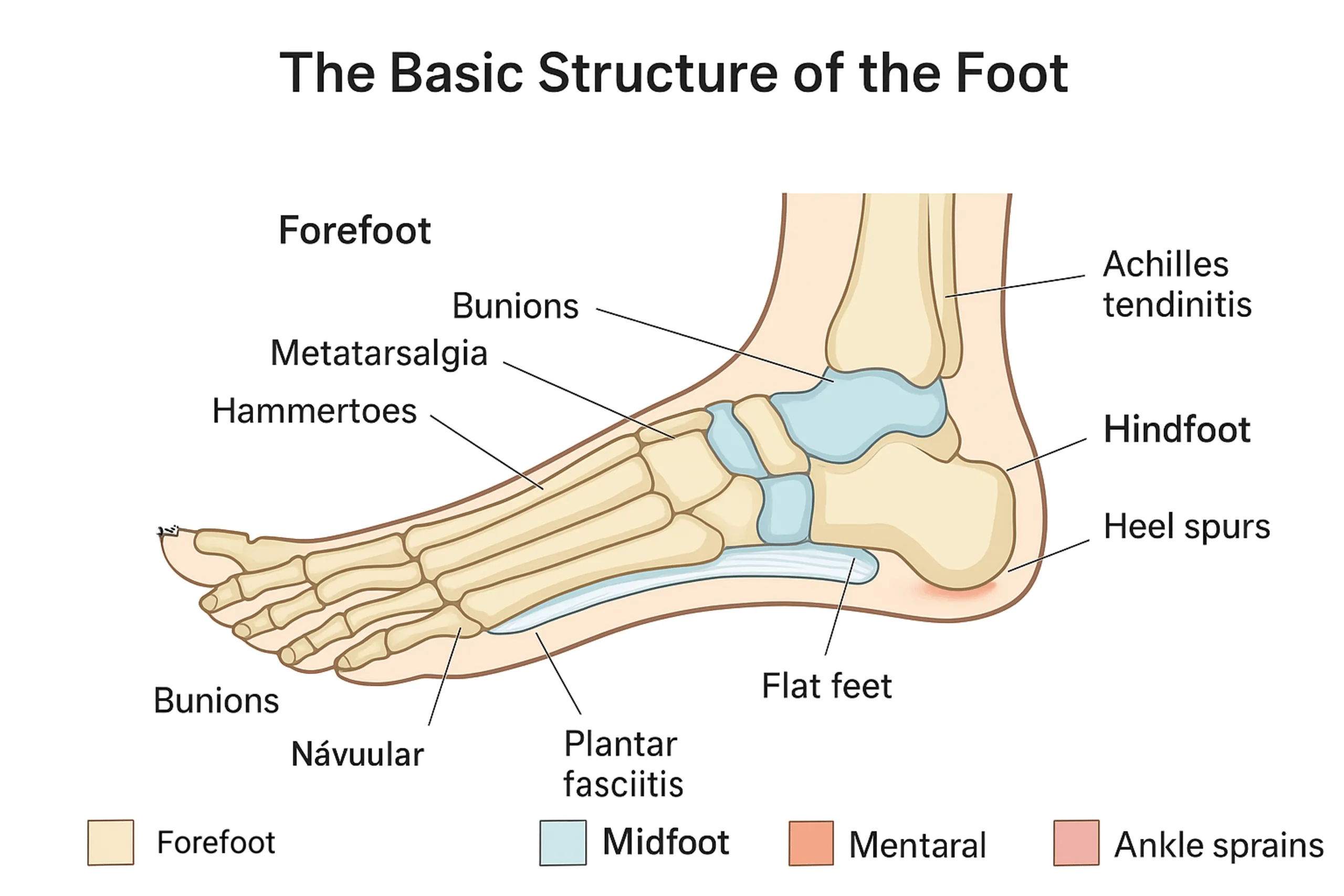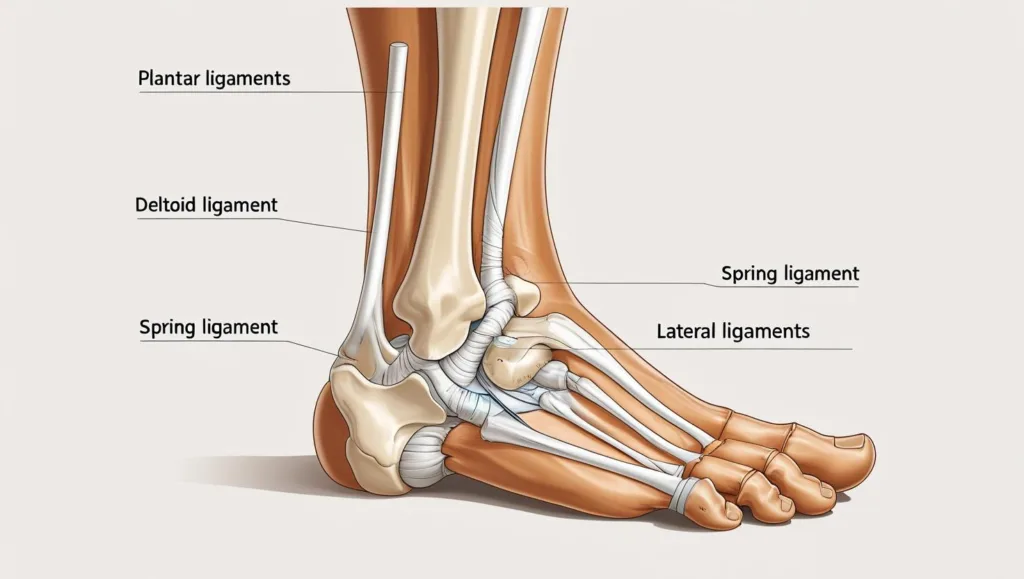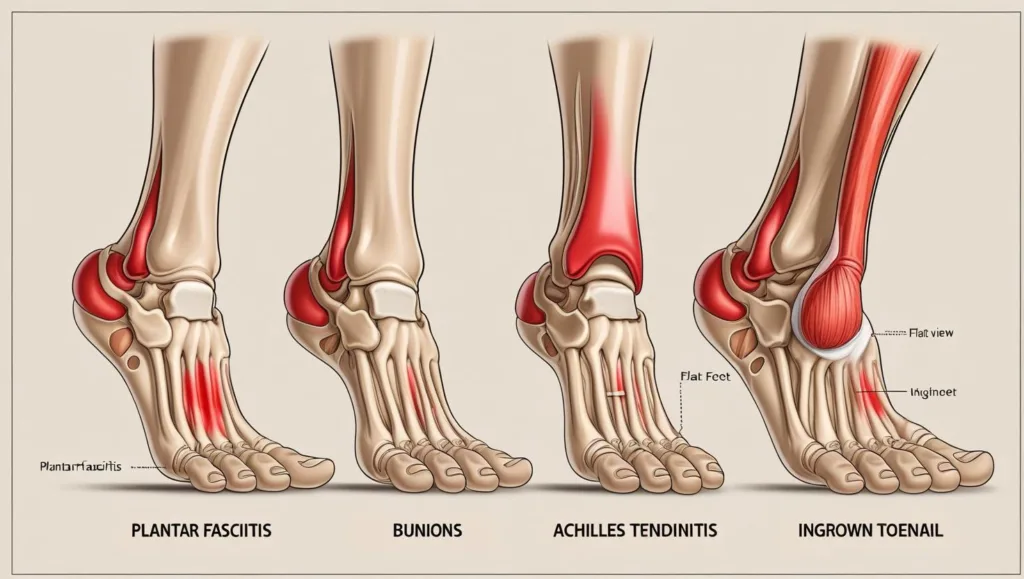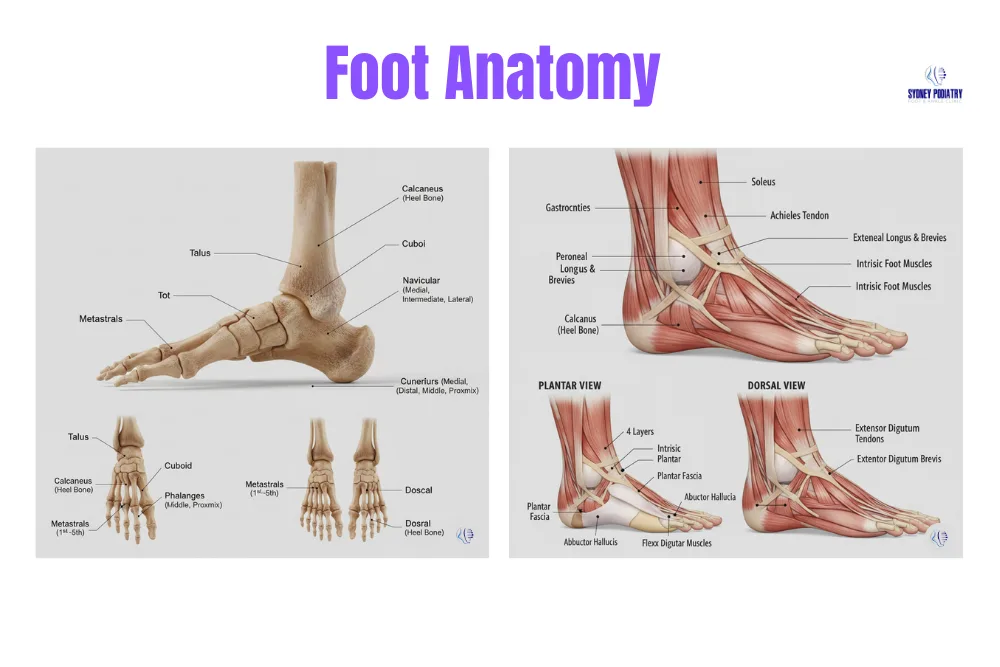The human foot is often described as an engineering marvel, built to support your body weight, absorb shock, and provide balance with every step. Containing 26 bones, 33 joints, and over 100 muscles, ligaments, and tendons, your feet are remarkably complex and resilient. Every movement—whether walking, running, or simply standing—depends on this intricate system working together in perfect harmony.
Understanding the structure and function of your feet is the first step towards maintaining long-term foot health. By learning more about foot anatomy, you can better care for your feet, reduce the risk of injury, and recognise when it’s time to seek professional advice.
From everyday discomfort to sports-related injuries and chronic conditions, Sydney foot and ankle clinic provides tailored treatments to help you move with confidence and comfort.
In this complete guide, we’ll explore the key parts of the foot, explain how each section functions, and highlight what can happen when things go wrong.
The Basic Structure of the Foot
Your foot can be divided into three main sections: the forefoot, midfoot, and hindfoot. Each plays a unique role in mobility, balance, and shock absorption.

1. The Forefoot
The forefoot contains your toes (phalanges) and the five metatarsal bones.
- The big toe (hallux) provides balance and propulsion when walking or running.
- The smaller toes help with stability and weight distribution.
- The metatarsals act as shock absorbers during movement.
Common forefoot conditions:
- Bunions – misalignment of the big toe joint.
- Metatarsalgia – pain in the ball of the foot.
- Hammertoes – abnormal toe bending, often caused by tight footwear.
Our bunion treatment in Sydney and orthotic solutions can help correct alignment and relieve discomfort.
2. The Midfoot
The midfoot forms the arch of the foot, which distributes weight and absorbs shock. It includes the navicular, cuboid, and three cuneiform bones.
Running along the bottom of the foot is the plantar fascia, a strong ligament that supports the arch.
Common midfoot issues:
- Plantar fasciitis – inflammation of the plantar fascia, a leading cause of heel pain.
- Flat feet – collapsed arches that may cause instability and pain.
- High arches – reduced shock absorption that can strain joints and muscles.
Our heel pain treatment in Sydney often combines orthotics, stretching, and shockwave therapy for lasting relief.
3. The Hindfoot
The hindfoot includes the heel bone (calcaneus) and the ankle bone (talus).
- The calcaneus is the largest foot bone and provides a strong foundation for walking.
- The talus connects the foot to the leg and forms part of the ankle joint.
- The Achilles tendon links the calf muscles to the heel, enabling running, walking, and jumping.
Common hindfoot problems:
- Heel spurs
- Achilles tendinitis
- Ankle sprains
These conditions are frequently treated at our foot and ankle clinic in Sydney, where we combine advanced therapies with personalised care.
Muscles and Tendons of the Foot and Explained Foot Anatomy
Over 30 muscles work with tendons to give your feet strength and flexibility.
- Intrinsic muscles – located inside the foot; they support the arches, move the toes, and maintain balance.
- Extrinsic muscles – start in the lower leg and connect to the foot with tendons, controlling ankle and toe movement.
Key foot tendons:
- Achilles tendon – the strongest tendon, essential for walking and running.
- Tibialis posterior tendon – supports the arch; dysfunction may cause flat feet.
- Peroneal tendons – provide ankle stability and prevent rolling injuries.
When these structures become inflamed or overused, conditions like tendinitis or ankle instability can develop.
Ligaments in the Foot

Ligaments are connective tissues that stabilise joints and link bones together.
- Plantar fascia – supports the arch and absorbs impact.
- Deltoid ligament – stabilises the inner ankle.
- Lateral ligaments – prevent excessive ankle rolling and sprains.
Damage to these ligaments often results in ankle sprains, a condition we treat regularly through rehabilitation and strengthening programs.
Joints of the Foot
The foot has more than 30 joints, giving it flexibility for walking, running, and balance.
- Ankle joint – allows up-and-down motion.
- Subtalar joint – enables side-to-side movement on uneven surfaces.
- Metatarsophalangeal joints (MTP) – connect the toes to metatarsals, critical for push-off during walking.
Joint problems can lead to stiffness, swelling, and chronic pain, requiring professional care from a podiatrist.
Common Foot Conditions Linked to Anatomy
Because the foot is such a complex structure, even small imbalances can cause pain. Common issues include:

- Plantar fasciitis – heel pain due to inflammation of the plantar fascia.
- Bunions – bony bumps from misaligned toe joints.
- Achilles tendinitis – inflammation from overuse.
- Flat feet – collapsed arches causing pain in feet, knees, and hips.
- Ingrown toenails – painful nail growth into surrounding skin.
At Sydney Podiatry, we provide ingrown toenail treatment, bunion treatment, heel pain solutions, and custom orthotics in Sydney to address these concerns effectively.
Caring for Your Feet
Maintaining healthy feet reduces your risk of long-term conditions. Our podiatrists recommend:
- Wearing supportive, properly fitted shoes.
- Stretching and strengthening foot muscles daily.
- Replacing worn-out footwear.
- Maintaining a healthy weight to reduce strain.
- Visiting a podiatrist in Sydney at the first sign of persistent pain, swelling, or deformity.
Treatments Available at Sydney Podiatry
Our foot and ankle clinic in Sydney offers both general and advanced podiatry care, including:
- Custom orthotics in Sydney – for posture, gait correction, and pain relief.
- Veteran Care – effective for heel pain and chronic injuries.
- Nail Surgery – safe and non-invasive.
- Ingrown toenail surgery – for recurring nail issues.
- Sports podiatry Sydney – injury prevention and rehabilitation for athletes.
- Children’s foot care – ensuring healthy foot development from an early age.
Conclusion
The anatomy of the foot is a remarkable design of bones, muscles, ligaments, and joints that allows movement, balance, and support. From the arches of the midfoot to the ankle joint, every structure plays a vital role in keeping you active.
By understanding your foot anatomy and recognising when something feels wrong, you can take proactive steps to prevent common conditions. At Sydney Podiatry, our expert team is here to help with everything from heel pain treatment and bunion care to orthotics, sports podiatry, and children’s foot care.
If you are experiencing ongoing foot or ankle pain in Sydney, book an appointment with our team today and take the first step toward healthier feet.
FAQ
The foot is divided into three main sections: the forefoot (toes and metatarsals), midfoot (arch bones), and hindfoot (heel and ankle). Each section works together to provide balance, mobility, and support.
Knowing your foot anatomy helps you identify early signs of problems like flat feet, bunions, or heel pain. It also allows you to choose the right footwear and seek timely podiatric care.
Each foot has 26 bones, 33 joints, and over 100 muscles, ligaments, and tendons — all working together for stability and movement.
Yes. Misalignments or weak arches can lead to pain in the knees, hips, or lower back due to improper weight distribution and posture imbalance.
Common issues include plantar fasciitis, bunions, flat feet, Achilles tendinitis, and hammertoes. These conditions often result from structural imbalances or stress on ligaments and tendons.
If you experience ongoing pain, swelling, or difficulty walking, it’s best to see a Sydney podiatrist. Early diagnosis prevents complications and supports long-term foot health.
Sydney Podiatry offers custom orthotics, physiotherapy, sports podiatry, nail surgery, and corrective footwear guidance to treat both mild and complex anatomical issues.


